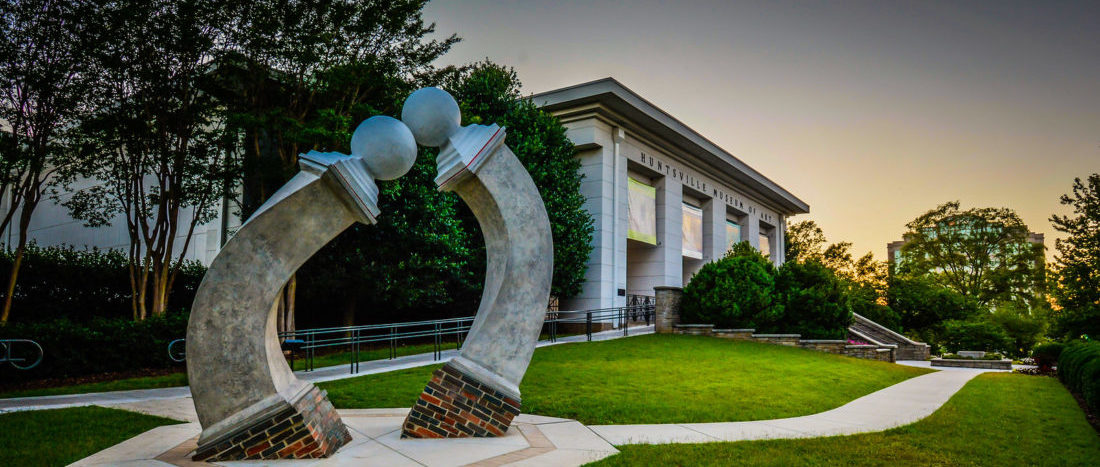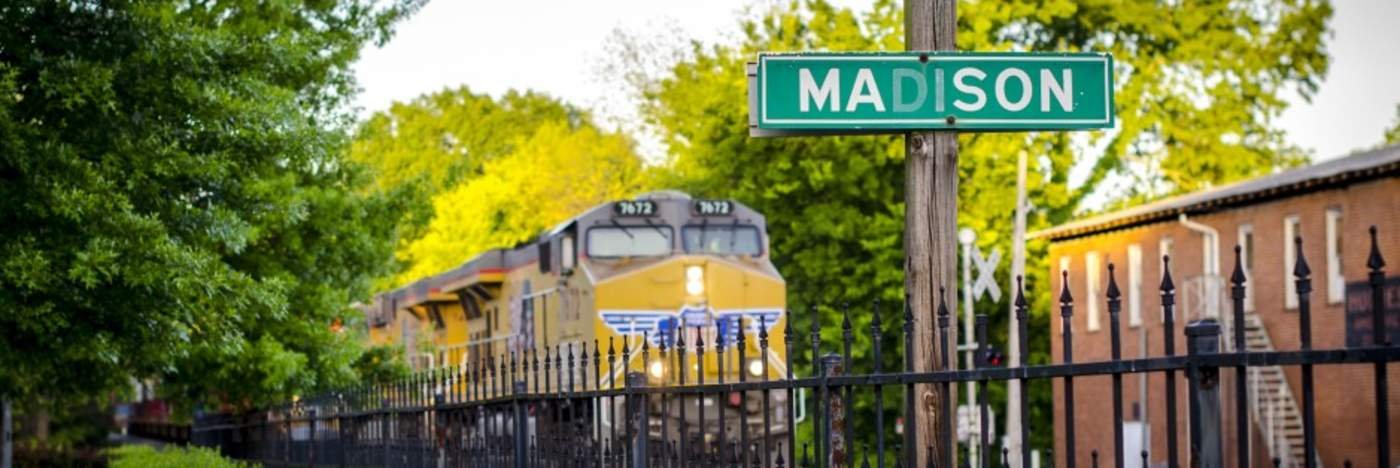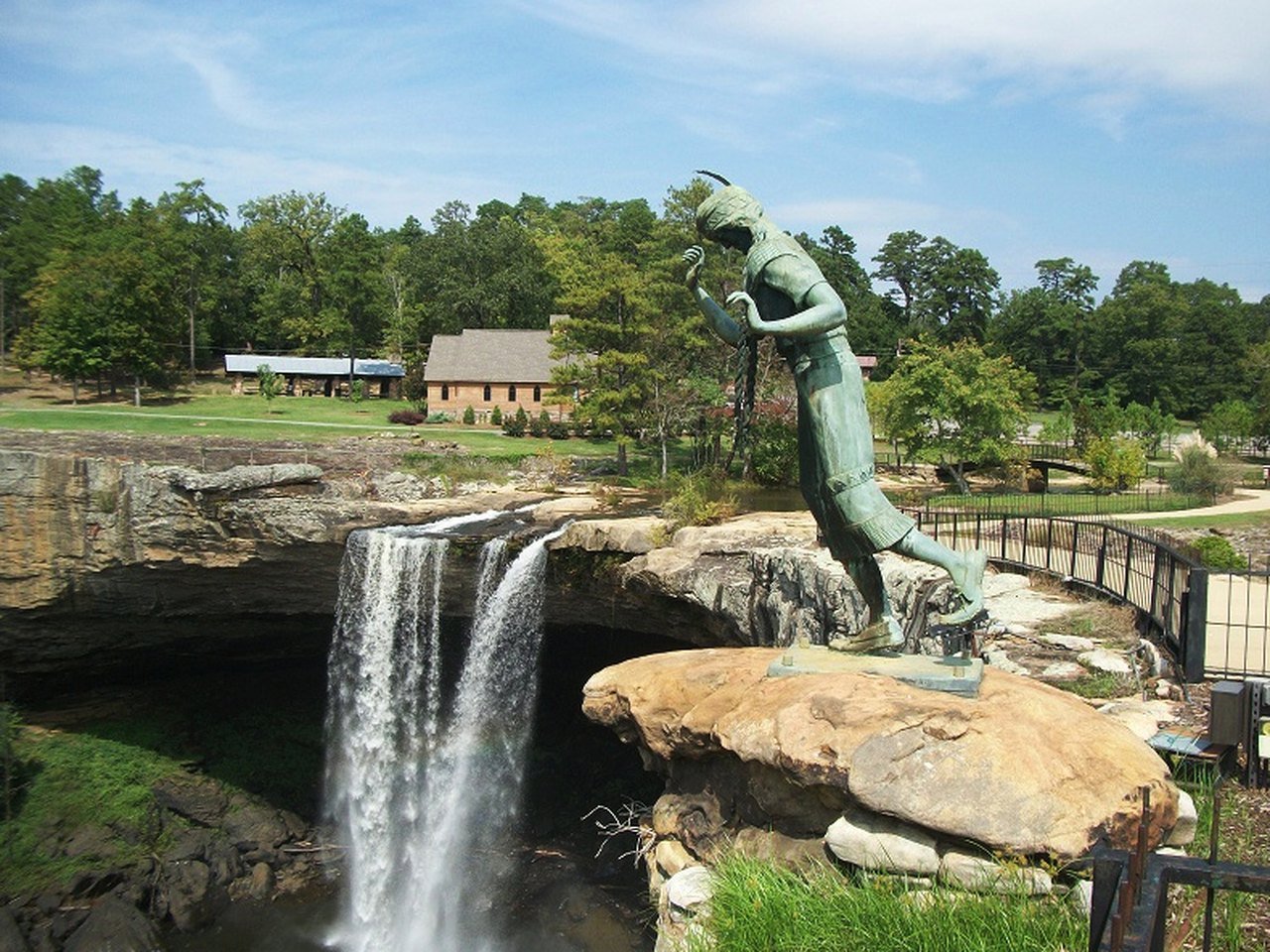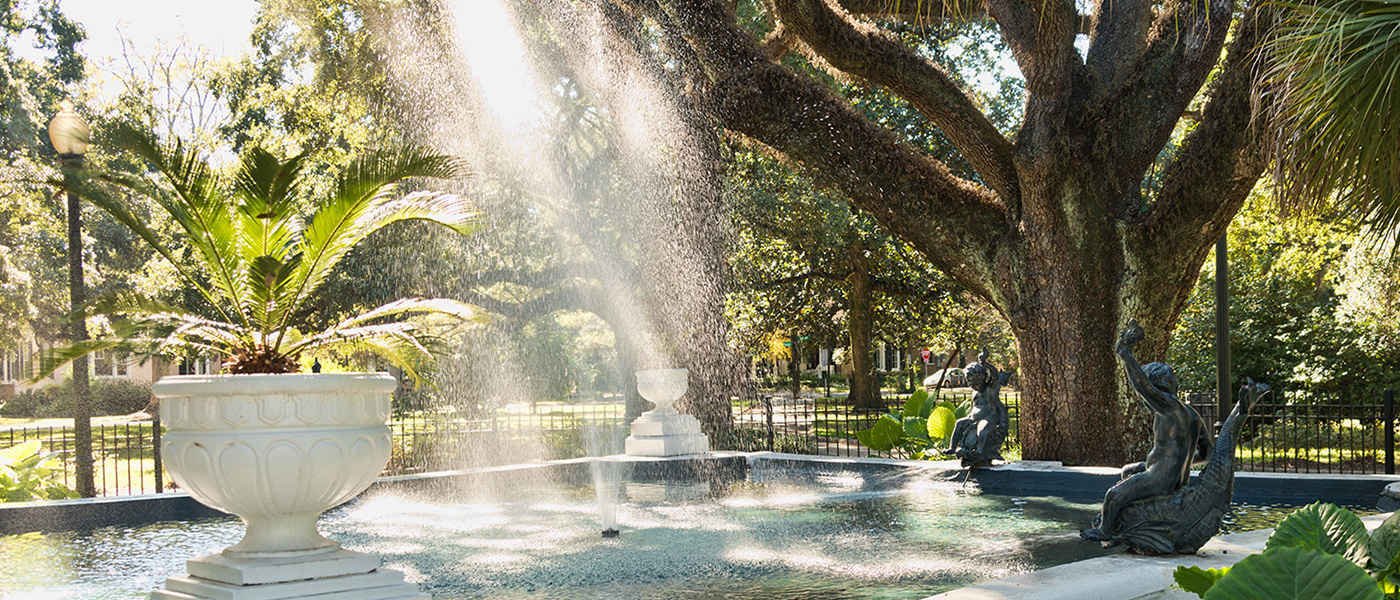Madison is a vibrant city located in Madison County, Alabama along the Tennessee River. With a population of around 48,000, it offers visitors a mix of history, culture, shopping, dining and outdoor activities.
Madison has preserved many historic buildings, homes and districts that reflect its heritage and role in the Civil War era. At the same time, the city has welcomed progress and features a modern downtown area dotted with shops, restaurants and entertainment venues.
| Attraction | Description |
|---|---|
| Space & Rocket Center | Features space exhibits, IMAX theater, and NASA artifacts. |
| Huntsville Botanical Garden | Offers themed gardens, butterfly house, and seasonal events. |
| Dublin Park | Provides sports facilities, walking trails, and a pool. |
| Madison City Farmers Market | Local market with fresh produce, crafts, and food vendors. |
| Rainbow Mountain Trails | Hiking trails with scenic views and diverse geology. |
| Palmer Park | Sports complex with playgrounds, baseball, and soccer fields. |
| Insanity Skate Park | Skateboarding park with ramps, bowls, and skate shop. |
| Madison Public Library | Modern library with extensive resources and programs. |
| Historic Madison Station | Historical landmark with period architecture and tours. |
| Wall Triana Enrichment Center | Cultural center with art, music, and community events. |
| Clay House Museum | Historic home showcasing local history and antiques. |
| KidVenture Playground | Children’s playground with interactive and safe play areas. |
Madison is perhaps best known for being the location of the U.S. Space & Rocket Center, which includes Space Camp and the Davidson Center for Space Exploration. Beyond aerospace, attractions also highlight the city’s place in the Civil War through restored plantations and museums. Outdoor pursuers will enjoy the multitude of parks with athletic fields, walking trails, fishing spots along the river and more.
With this guide covering 12 top attractions, visitors can easily fill a Madison itinerary with educational, fun and relaxing things to see and do.
Space & Rocket Center

Name and Location: The U.S. Space & Rocket Center museum is located at One Tranquility Base in Huntsville, Alabama right near the Huntsville International Airport.
History and Significance: As an official visitor center for NASA’s Marshall Space Flight Center, this massive complex has educated visitors about space science, history and technology since 1970 with items on display including the Saturn V rocket.
What to Expect: Guests can explore famous rockets, Mission Control simulators, an IMAX theater and interactives like the G-Force Accelerator. The center also offers educational STEM programs, rides, exhibits and an on-site camp.
Visitor Information: Open daily with paid admission. Combo tickets available. Summer and holiday hours may vary.
The U.S. Space & Rocket Center should be at the top of any Madison visitor’s list of attractions. As Alabama’s top tourist destination, the massive complex includes interactive museums, experiences like Space Camp, historic rockets and spacecraft, a planetarium and more space-related exhibits. Guests learn about space travel, living in space and the history of space exploration at NASA’s Marshall Space Flight Center.
Highlights include Shuttle Park with full-size upright replicas of historic rockets and spacecraft, Davidson Center housing one-of-a-kind artifacts, Apollo and Saturn V Halls, GRAIL MoonKAM classroom, exhibits like Astronaut Gallery and Rocket Park. Visitors can dine at Mars Grill, shop at two stores and enjoy an IMAX theater and planetarium shows. Camps let kids and adults simulate astronaut training through simulations. Special events occur regularly from stellar viewings to veteran astronaut meet-and-greets.
Huntsville Botanical Garden

Name and Location: Huntsville Botanical Garden is situated at 4747 Bob Wallace Avenue in Huntsville, Alabama.
History and Significance: Open since 1989, the 112 acre gardens contain the nation’s largest open-air butterfly house, spectacular nature trails, ponds and diverse ecosystems with nearly 5,000 plant species. Its beautiful landscapes and programs promote education, conservation and research.
What to Expect: Visitors can stroll through aquatic gardens, nature paths, a wildflower meadow, bamboo forest, wetland boardwalk trail, an interactive children’s garden and delightful butterfly house. Seasonal light and sculpture displays.
Visitor Information: Open daily except major holidays. Admission fee charged. Tram tours and facility rentals offered.
As one of America’s largest botanical gardens, Huntsville Botanical Garden is situated on 112 acres and contains thousands of plant species in specialized gardens and greenhouses. Visitors stroll through multiple themed areas like an aquatic garden, open lawn, butterfly house, children’s garden, fragrance garden, fern glade and more. A unique offering is the nation’s largest open-air butterfly house, allowing observation of hundreds of native butterflies.
Seasonal displays are also popular in spaces like the rose and daylily gardens, while the Anderson Education Center provides gardening classes. Two on-site eateries let visitors linger and enjoy panoramic views of the grounds and linked nature trails. Paid admission includes access to all gardens, exhibits and facilities during normal hours. Annual events range from summer concerts to a winter Galaxy of Lights featuring holiday light displays.
Burritt on the Mountain

Name and Location: Burritt on the Mountain is a museum and park located on Round Top Mountain at 3101 Burritt Drive Southeast overlooking Huntsville, Alabama.
History and Significance: Dr. William Henry Burritt settled on the mountain in 1936, establishing medical facilities, nature trails and eccentric attractions including mining exhibits, miniature war reenactments, music shows in cave underground theaters and more over time.
What to Expect: Guests can visit restored 19th century homes with antique interiors, explore mining tunnels, see barnyard animals, magnificent city views from Lookout Tower, nightly entertainment and food concessions.
Visitor Information: Open daily. Nominal admission fee. Seasonal hours apply.
For a bit of history and a breathtaking view, Burritt on the Mountain is a can’t miss attraction when visiting Madison. Sitting atop Round Top Mountain, the park contains historic homes and structures that provide insight into rural Southern life during the 19th century.
The mansion property itself was built in 1937 and underwent extensive renovations before opening for public tours. Guests today can explore the museum exhibits, outbuildings like a barn and farmhouse, gardens and spacious grounds. Romman Nose Spring supplied water to residents for centuries.
The on-site restaurant serves classic Southern cuisine on the veranda, while a gift shop sells local crafts and goods. However, the main draw is taking the scenic drive up Round Top Mountain to fully take in panoramic views from the park’s overlook. The valley vistas of Madison make the short drive worth it alone. Beyond daily visits and grounds access, Burritt on the Mountain hosts a number of annual events and weddings.
Alabama Constitution Hall Park

Name and Location: Alabama Constitution Hall Park occupies a city block bounded by Gates, Holmes, Randolph and Clinton in downtown Huntsville, Alabama.
History and Significance: The park preserves the oldest standing structure in Huntsville, used in 1819 to draft Alabama’s first state constitution. This small frontier law office remains as a monument recognizing the birth of Alabama statehood.
What to Expect: Alongside the restored hall exhibit, visitors can stroll landscaped grounds containing a fountain and statues honoring the state’s early political figures who worked on site to frame the 1819 document.
Visitor Information: Outdoor park open daily dawn to dusk. Hall interior has special tour hours. Admission free.
Located downtown, Alabama Constitution Hall Park preserves the historic hall and surrounding grounds where delegates gathered to draft Alabama’s first state constitution in 1819. Today, visitors can take free guided tours through the symmetrical Greek Revival-style hall furnished with antiques.
Tours cover how Huntsville came to host the constitutional convention and detail the 44 delegates who traveled to the frontier town and their debates while drafting the formative document.
Interior rooms showcase a mix of period weapons, furniture and artifacts along with displays on women’s rights, slavery and the Creek War’s impact. Guests view James Madison’s chair used by convention president John Williams Walker along with interactive exhibits. The adjacent park often hosts community events and is a pleasant spot for picnicking.
Harrison Brothers Hardware Store and Museum

Name and Location: The Historic Harrison Brothers Hardware Store is located at 124 South Side Square in downtown Huntsville, Alabama adjacent to the Courthouse.
History and Significance: Harrison Brothers opened in 1879 as a pioneer commercial hardware outlet that witnessed Huntsville’s growth for over 90 years featuring stunning Victorian architecture. The restored shop operates today as a decor and gift museum.
What to Expect: Floor to ceiling shelves, original wooden floors and tin ceilings fill the interior containing vintage household items, hardware pieces, local nostalgic merchandise plus helpful staff clad in period costumes.
Visitor Information: Open Monday through Saturday 10am-4pm. Closed Sunday. Free admission but donations welcomed.
Established in 1879, Harrison Brothers Hardware Store continues operations at its original downtown Madison location today as both a functioning hardware store and free museum. The store remains virtually unchanged from its earliest days, featuring original counters, cabinets, products and hardware supplies plus accounts books dating to the 1800s.
Guests are welcome to browse the store’s stock and exhibits displaying various tools and appliances used through the decades. However, the primary museum collection lives upstairs accessible via a narrow staircase leading to rooms covered wall-to-wall with relics.
With cooperating collectors and minimal curation, the jam-packed museum almost overwhelms visitors with the extensive array of artifacts chronicling agrarian life of the 1800s to mid-1900s. The sheer volume makes this one of the more unique and hidden attractions locals love showing off in historic Madison.
Historic Huntsville Depot

Name and Location: The Huntsville Historic Depot is located at 320 Church Street in downtown Huntsville, Alabama adjacent to the Von Braun Center.
History and Significance: Completed in 1860, this towering 20,000 sq. ft. former train station assisted Union troops during the Civil War and served as a vital regional transportation hub until 1969 before being restored.
What to Expect: Visitors can admire original 19th century architecture and displays conveying the depot’s history. Space also utilized for special events and seasonal model train exhibits. Gift shop on site.
Visitor Information: Free admission. Open Monday through Saturday 10am-4pm, Sunday 1pm-4pm.
Railfans and history buffs will find interest in the Historic Huntsville Depot sitting adjacent to active railroad tracks in downtown. The historic train station now serves as event rental venue and free museum commemorating Huntsville’s rail heritage through the 20th century.
Visitors explore the renovated depot’s exhibits detailing the impact of rail transportation on Alabama industry, agriculture growth and economic prosperity. Authentic artifacts and displays convey how railroads connected Huntsville mills, mines, farms and factories to wider distribution and trade channels.
Guests walk the original foot tunnel beneath active tracks that linked separate station wings. Outdoors, rail enthusiasts admire passing trains from benches and take photos of equipment. A pavilion, box cars and engines pay homage to the city’s enduring rail legacy and connections.
Madison Historic District

Name and Location: Madison’s Downtown Historic District.located along Main Street from Green Street to Church Street contains over 130 19th century buildings registered with the National Registry of Historic Places.
History and Significance: Laid out in 1818 by James Madison on the site of a former cotton plantation, many structures from the 1800s tracing the area’s early days as an undeveloped frontier settlement still stand preserved today in Madison’s vibrant central district.
What to Expect: Strolling the quaint brick-lined streets, visitors will find restaurants, shops and museums housed inside the restored buildings along with historical markers conveying the rich narratives and architectural legacy behind one of Alabama’s oldest existing communities.
Visitor Information: Main Street open year-round to pedestrians. Contact Madison Chamber of Commerce for guide info.
Listed on the National Register of Historic Places, Madison’s Old Town Historic District contains over 130 architectural landmarks exemplifying 19th century life along the cotton frontier. The district spans over 300 acres of homes, churches and commercial buildings built in Federal, Greek Revival, Gothic Revival, Italianate and Queen Anne styles of the 1800s to early 1900s.
Notable mansions include Donehew-Latham House, Donehew-Norwood House, Merrill House, Johnston-Mock House, Shackelford House and Turner-Burwell House. Most estate homes operated as cotton plantations using slave labor and represent the area’s agrarian wealth prior to the Civil War’s devastation.
Home interiors display period furniture, textiles, silverware and portraits while guided tours provide insight into prominent owners. Beyond private homes, churches and cemeteries contribute to the preserved built environment transporting visitors to Madison’s 19th century heyday.
Pope’s Tavern

Name and Location: Pope’s Tavern is a historic stagecoach inn located at 459011 Natchez Trace Parkway in Florence, Alabama.
History and Significance: Originally built in 1816 by shoemaker Gideon Pope, it served as an inn providing rest and refreshments for early 19th century stagecoach passengers traveling the rugged Natchez Trace trail between Nashville and Natchez. It is the oldest extant structure in Lauderdale County.
What to Expect: This National Park Service site allows visitors to see an early 19th century inn almost entirely in its original state. Interpretive exhibits, audio programs and staff provide information about the site’s history and the Natchez Trace.
Visitor Information: Open daily from dawn to dusk with free admission. Ranger-led tours offered weekends Memorial Day to Labor Day. Picnic area on site.
Pope’s Tavern offers visitors a window into Huntsville life in the early 1800s. Listed on the National Historic Register, the former stagecoach inn and tavern opened shortly after Alabama statehood in 1819. Operated by merchant Andrew Pope, the frontier outpost and stagecoach stop provided food, drink and rest for early settlers passing through the newly minted town named after Revolutionary War veteran John Hunt.
Enslaved laborers helped run the lucrative tavern enterprise over four decades until Pope’s departure after the Civil War. Today, the red brick tavern houses exhibits recounting how pioneers traveled, ate and socialized in early Alabama settlements. Restored parlors, dining areas and guest rooms display furnishings similar to when lodgers bunked here overnight as they traveled by horse and carriage.
Guides recount the tavern’s many proprietors over two centuries while highlighting the commerce, hospitality and rough-and-tumble atmosphere during Huntsville’s formative years.
Weeden House Museum and Garden

Name and Location: The Weeden House Museum and Garden at 300 Gates Street was an antebellum suburban estate home in Huntsville, Alabama.
History and Significance: This 14 room Greek Revival style house finished in 1819 for female artist and later Union spy Maria Howard Weeden portrays early 19th century domestic life in the prosperous cotton region. The rare architecture also includes brick stables, an icehouse and carriage house.
What to Expect: Tours walk through period furnished rooms with Weeden family belongings and Maria’s studio containing her paintings. Outside are two acres of formal gardens, brick pathways and picturesque shade trees.
Visitor Information: Open Tuesday-Saturday for guided tours on the hour 10am-2pm. Admission charged.
History and horticulture commingle at the Weeden House Museum and Garden, an antebellum estate turned decorative arts museum surrounded by seven acres of garden displays. The red brick home finished in 1819 showcases interior design tastes among North Alabama’s planter elite just prior to the Civil War.
Guided tours trace changes made by owners Dr. Charles and Maria Howard Weeden, covering 35 main rooms filled with original plasterwork, ironwork, silverware and furnishings in Federal, Empire and Victorian styles. Key pieces include a telescope used for Civil War spying, Duncan Phyfe sofa, Austrian silver service set, Halle’s Vienna piano, and portraits.
Outside, trained horticulturists maintain heritage garden spaces like 19th century-style boxwood parterres, rose garden, perennial borders and topiary collection to emulate how such an estate would have displayed ornamental plants using period methods. Interpretive signs chronicle the historic occupants and changing landscape architecture fashions over two centuries.
Monte Sano State Park

Name and Location: Monte Sano State Park occupies over 2,000 acres atop Monte Sano mountain east of downtown Huntsville, Alabama providing panoramic valley views.
History and Significance: Originally a coal mining site, this mountaintop became a health resort until the 1930s. Civilian Conservation Corps developments created lodges and recreational infrastructure during the Great Depression that have made it a popular regional park destination.
What to Expect: Visitors can hike scenic wooded trails, camp overnight, have picnics, and participate in nature programs while gazing at gorgeous vistas of Huntsville below through the lush tree canopy.
Visitor Information: Park open daily. Nominal day use and overnight camping fees. Some amenities seasonal.
Offering 2,140 acres of woodlands, trails and event space, Monte Sano State Park gives visitors ample opportunities to connect with nature without leaving the city. Sitting atop Monte Sano mountain, the state park boasts over 15 miles of hiking and biking paths ranging from easy to difficult with photogenic outlooks of the surrounding valley and river basin.
Outdoor enthusiasts use the trails year-round while taking in diverse fauna, limestone outcroppings and native hardwood forests dotted with creeks and wetlands. The park also encompasses a military memorial, restaurant, rustic lodge, interpretive center, campsites and picnic areas for full or half-day excursions. Programming highlights include outdoor education programs, birding festivals, guided hikes and holiday light shows. Leashed pets are welcome across most areas within the state park grounds that have served as a community recreational fixture since the 1930s New Deal era.
Lowe Mill Arts and Entertainment

Name and Location: The Lowe Mill Arts and Entertainment facility is located at 2211 Seminole Drive in Huntsville, Alabama.
History and Significance: Constructed as the Lowe Textile Mill in the 1900s, at its peak it was Alabama’s largest mill. Closed in the 1970s, it found new purpose as a non-profit multidisciplinary arts center hosting galleries, studios, theaters, events and more. Over 200 regional creators work on site.
What to Expect: Visitors can freely browse three floors filled with contemporary art, crafts and designs for sale created by resident artists across mediums – painting, metalwork, sculpture, textiles, glasswork, photography and more.
Visitor Information: Free admission. Open daily 10am-6pm. Facility rentals offered.
Founded as the city’s first textile mill, Lowe Mill now fosters artistic talents as the largest privately owned arts facility in the country. Converted into a mixed-use space, Lowe Mill spans multiple structures housing 150 working studios for potters, woodworkers, sculptors, painters and other resident creatives practicing traditional to contemporary crafts.
Visitors browse original artworks showcased in studio galleries and public exhibition halls spotlighting talents across painting, glass, jewelry, metal, fiber art, photography, calligraphy and more. Beyond visual arts, Lowe Mills hosts events like concerts, film screenings, literary readings, food truck rallies and craft fairs in indoor and outdoor venue spaces.
Guest studios offer hands-on art classes for all ages and skill levels ranging from wheel throwing to painting. The vibrant creative community and eclectic works make Lowe Mill a top Huntsville attraction to inspire budding artists and admirers alike.
Huntsville Museum of Art

Name and Location: The Huntsville Museum of Art occupies a lofty downtown building at 300 Church Street in Huntsville, Alabama.
History and Significance: Established in 1970, the museum holds over 3,300 objects spanning world history and culture from ancient to contemporary including impressive collections of 19th-21st century American art. Changing and permanent exhibits are displayed in elegant galleries.
What to Expect: Guests can explore different themed wings – decorative arts, Native American, African, Asian, modern and pop art styles. Public programs, educational tours, special shows and events also offered. The store sells unique gifts.
Visitor Information: Open Tuesday-Saturday 10am-5pm, Sunday noon-5pm. Admission fee charged with discounts available.
As the largest art museum in Alabama, Huntsville Museum of Art holds a renowned collection of American and European paintings, sculptures and road art spanning five centuries. Located in the heart of downtown, the museum complex contains three gallery spaces and an interactive children’s area totaling over 55,000 square feet of exhibits.
American masters like Albert Bierstadt, Frederic Remington, Childe Hassam, Georgia O’Keeffe and Robert Henri headline the paintings collection, while Jean Arp and Antoine Bourdelle represent European sculptors. however, special strengths lie with decorative 19th century glass, pottery and furniture punctuated by complete parlors and office vignettes.
Interpretive placards chronicle both art movements and regional Alabama artists who convey local landscapes and culture through contemporary works. Museum docents frequently lead tours while special events range from guest lectures to after-hours socials. Admission is free, encouraging repeat visits.
Conclusion
Between aerospace excursions, garden strolls, historic sites and cultural attractions, visitors can craft quite an itinerary when exploring Madison, Alabama and the surrounding area. This guide only highlights twelve top area attractions, so there is ample more to fill your time discovering Madison’s roots and modern amenities.
Schedule at least three days to take in some highlights detailed above from the U.S. Space & Rocket Center thrills to feeling transported back in time at antebellum mansion tours or Pope’s Tavern insights into Alabama’s frontier days. Excellent dining and shopping options abound across Madison’s vibrant districts and suburbs to refuel and bring home local crafts or spirits from the booming beverage trail. With so much to experience, Madison offers an immersive escape into everything that makes Alabama a top Southern destination.





Join the Conversation